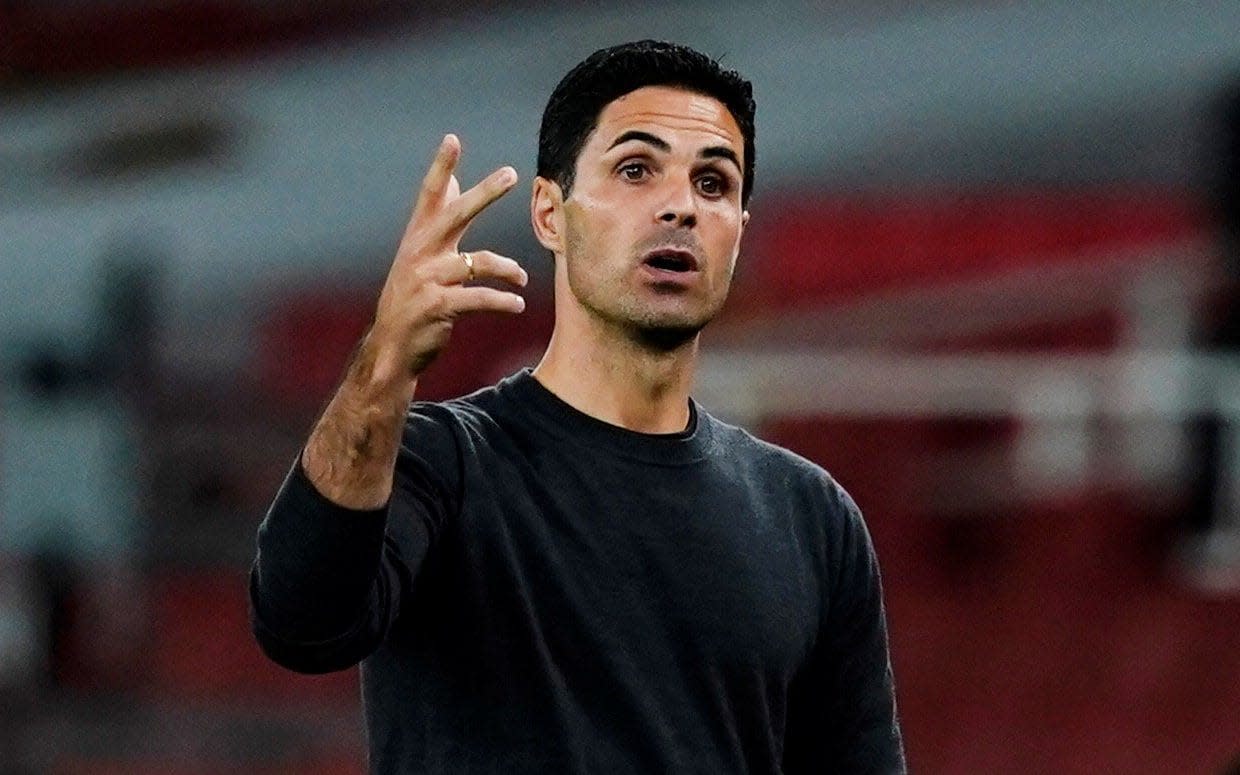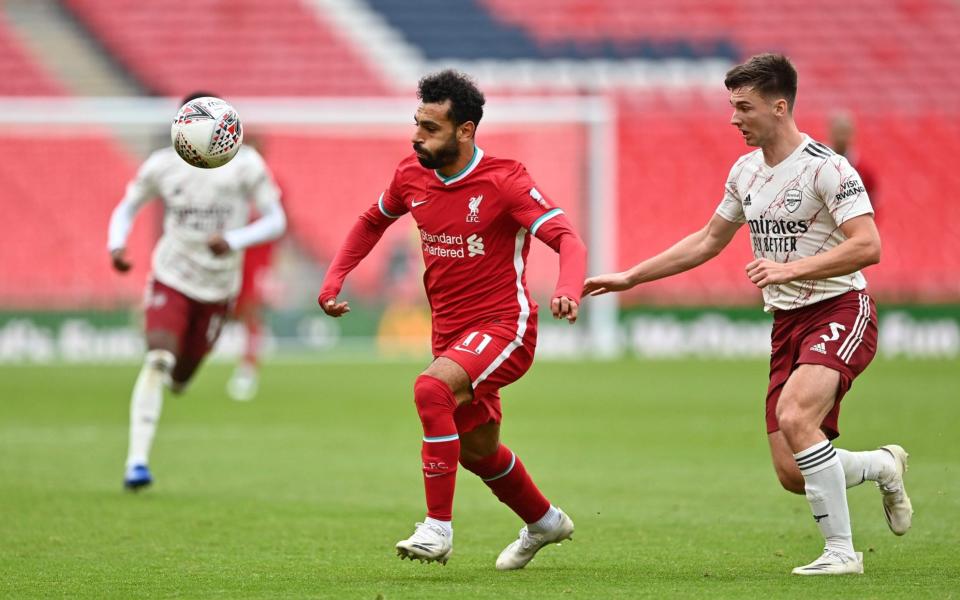How Mikel Arteta helped Arsenal compete with Liverpool after years of torment

A prediction: in the early stages of Monday's game at Anfield, Arsenal will play a pass deep in their own half under intense Liverpool pressure and their fans' stomachs will churn. Meanwhile, Mikel Arteta will be calm.
"I get nervous when we kick the ball long!" the Arsenal manager has said. “The quicker it goes there, the quicker it comes back."
It is because of Arteta that Arsenal travel to Liverpool with optimism and hope - not necessarily of winning - but of competing with the champions. Since Jurgen Klopp's arrival, Arsenal have been blown off the pitch at Anfield: conceding 18 goals in their last five league visits, losing four and drawing one. Under Arteta, they have beaten Liverpool 2-1 at the Emirates and produced an encouraging performance in the Community Shield which they won on penalties. Can they repeat the trick at Liverpool's fortress?
The Premier League victory was far from a manifestation of Arteta's footballing ideals. Liverpool were utterly dominant but Arsenal capitalised on rare gifts offered by Virgil van Dijk and Alisson. As Arteta admitted post-match, "it wasn't part of the game plan" for Liverpool to have 69 per cent possession and out-shoot Arsenal 24 to three. Arsenal had fortune on their side, but also earned credit for forcing errors through improved pressing from the front. Who to pick at centre-forward, Alexandre Lacazette or Eddie Nketiah, is one of Arteta's key selection dilemmas. Both are industrious though Nketiah is sharper.
If the game at the Emirates was hardly a technical exhibition, holding on against an elite opponent did provide a psychological boon. Three days later, Arsenal beat Manchester City in the FA Cup semi-final. They also defended resolutely in a back five, with Kieran Tierney coming to the fore with what was then his standout defensive performance in a red and white shirt. After some difficult moments in the first half, he grew stronger in his battle against Mohamed Salah. At the Emirates, Salah had just 27 touches, significantly fewer than his season average of 43.9 per 90 minutes.

He was remarkably quiet in the Community Shield, when Ainsley-Maitland Niles flanked Tierney at left-wing back. If Salah starts centrally and drifts wide, Tierney is comfortable defending the flanks as a natural full-back. If Salah starts wide and comes in, Maitland-Niles is comfortable defending inside as a right-footer who has played fleetingly in central midfield. Maitland-Niles has expressed a desire to play higher up the pitch, but has carved out a niche as a defensive neutraliser of tricky opponents and will likely be preferred to Bukayo Saka at Anfield.
Arsenal's switch to 3-4-3 after a damaging defeat at Brighton was an important moment in Arteta's fledgling reign, although he bristles when Arsenal's system is described as a back three or five. They in fact operate with a hybrid system, defending in an orthodox five when the opposition have good possession but flipping to a four on the ball. Maitland-Niles or Saka move into the left half-space - the vertical channel between the wing and the centre of the pitch - in effect acting as an extra central midfielder, with Tierney pushing out to left-back.
These movements are based on the positional principles Arteta was schooled in under Pep Guardiola, who divides the training pitch into zones. Only two players can occupy the same vertical zone and only three players can occupy the same horizontal zone. You will therefore not see Tierney, Maitland-Niles and Pierre-Emerick Aubameyang on the left flank at the same time - one will be in a more central position. As Tierney put it: “You should know where the left mid’s going to be, the centre-mid, so you can just play in sync. Everybody’s one brain."
Having Maitland-Niles as a spare man can help create triangles in build-up and help Arsenal play out from the back, something they did to superb effect in the Community Shield. It has become Arsenal's trademark goal: a sweeping move from back to front that starts with intricate play in their defensive third and ends with direct devastation. These moves resemble counter-attacks and are often described as such, but that is not strictly accurate because there is no turnover of possession.
At Wembley, goalkeeper Emiliano Martinez, Mohamed Elneny and Rob Holding combined to beat Liverpool's first line of pressure before Hector Bellerin faded a ball into the space behind the advanced Andy Robertson to free Saka. Liverpool's defence had to shuffle across leaving Aubameyang free for the big switch of play and he did the rest with a sumptuous finish. Martinez has since moved to Aston Villa, and how Bernd Leno performs with the ball at his feet could be decisive at Anfield.

An old football adage is 'go long to play short', but the aim of playing out from the back is to 'go short to play long'; draw the opposition on, and exploit the space vacated with direct play once the press has been beaten. "We have to try to find ways of how we can hurt them," said Arteta while sounding a note of caution. "This is how they break a lot of teams down, when you feel comfortable with a little bit of space, and then the next minute you are punished."
Arsenal's play must be measured, precise and they need to hold their nerve. It is scary stuff, but also the only way they can give Liverpool a fright.


